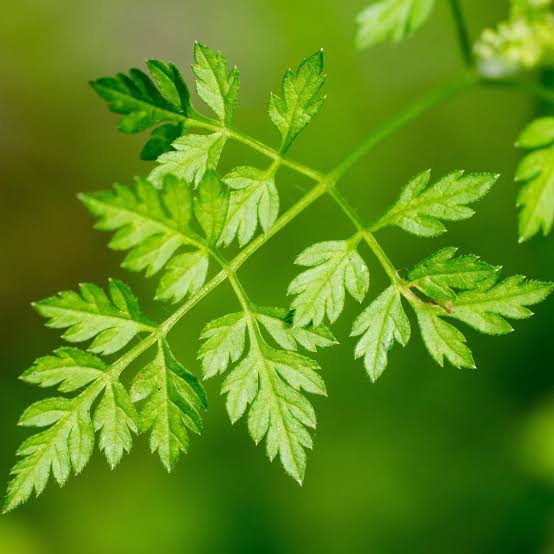- +033 2572 7171
- info@dhanvantary.com

4.5 Rating | 4500 Review

4.5 Rating | 4500 Review
World Health Organization (WHO) has estimated that 80% of the people worldwide rely on herbs for the treatment of various disorders. Herbs are considered as the natural medicine that are widely used in traditional system of medicine. Herbs are becoming increasingly popular throughout the world. According to WHO, around 21,000 plant species have the potential for being used as medicinal plants.

One such plant is Chervil which has the potential to be used in the novel medicines throughout the world. Chervil belongs to the carrot family and its leaves highly resemble carrot tops. In ancient times, this plant was believed to symbolize revitalization. This plant doesn’t pose any danger to health and can be consumed in large quantities. It is quite nutritious. The entire herb is edible but the roots and leaves are more commonly used. It is a good source of minerals and vitamins and possesses broad pharmacological activities.
Chervil is classified into four main varieties. These varieties are: Garden Chervil, Wild Chervil, Root Chervil and Bur Chervil. Out of all these varieties, garden chervil is most commonly used.
Chervil commonly known as Gourmet’s Parsley is a very delicate herb but full of nutritional value. This plant has 12 species, some of which are noxious in nature.
Chervil is native to the Caucasus but was spread to most of the Europe by the Romans, temperate parts of Asia. It is also most popular in England, Germany and America. It is not cultivated in India.
The leaves of this herb have digestive action therefore the infusion of fresh leaves is used for digestive disorders.
Due to the anti-inflammatory properties of this herb, it is used in suppurative and inflammatory skin disorders such as acne (an inflammatory disease of the sebaceous gland) and eczema. (Characterized by redness, itching, inflammation).
Due to its effectiveness in skin disorders, this herb is used as an ingredient in creams for hemorrhoids and varicose veins.
Due to its blood thinning and anti-hypertensive properties, this herb is used for normalizing high blood pressure.
Impaired unavailability of nitric oxide (NO) in the vascular system can lead to cardiovascular disorders which can be prevented by the consumption of adequate nitrate and nitrite molecules.
The best sources of nitrate and nitrite in the diet is the consumption of green leafy vegetables and chervil is one of the richest sources of nitric oxide.
Chervil is an herb known for its expectorant property as it removes excess mucous from the respiratory tract.
Chervil herb is diuretic in nature, therefore, it helps in the process of excretion by promoting urination which leads to the removal of toxins and waste materials from the body.
It is also useful in the treatment of cystitis, kidney and bladder stones.
Being a detoxifying agent, it reduces the appearance of early signs of aging like fine lines, dark spots, wrinkles etc.
This herb also purifies blood which makes the skin look smoother and younger.
Both leaves and stem parts of this plant are used for cooking.
